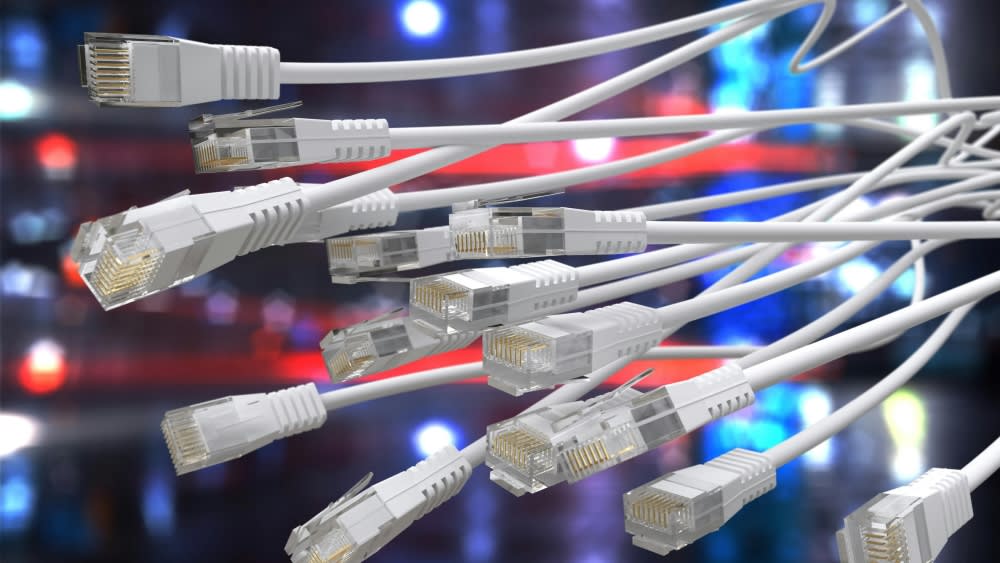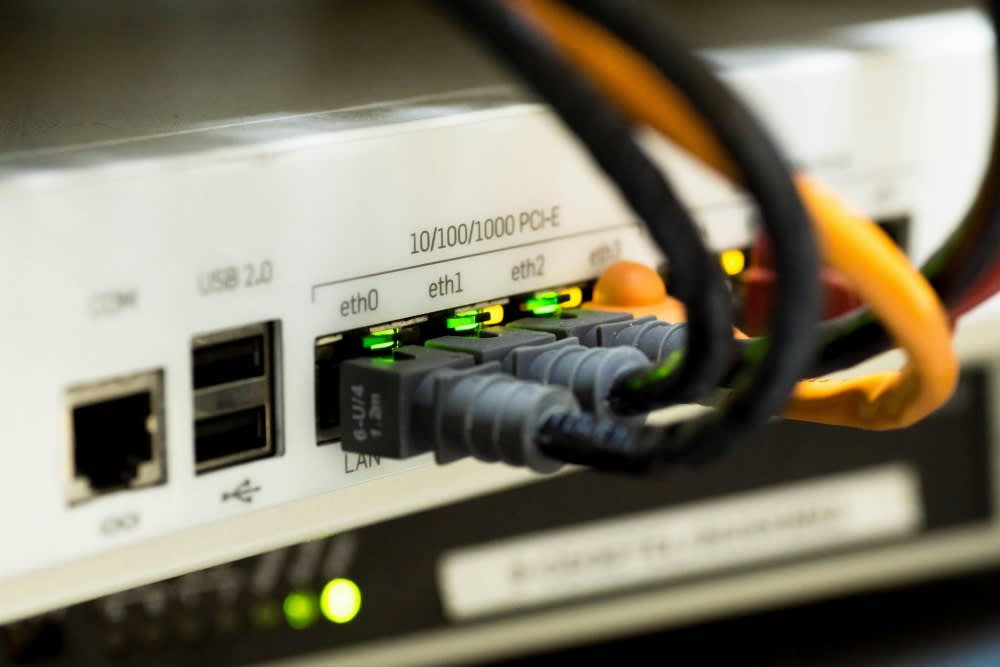- Published 25 Mar 2024
- Last Modified 25 Mar 2024
- 7 min
LAN Cable Categories: Understanding the Difference
Explore different LAN cables with top brands like HARTING. Find the perfect fit for your network's speed, bandwidth, and environmental needs.

When it comes to the commercial networking environment, Ethernet cables ensure the seamless transfer of data across different networks. However, these cables come in various categories and colour codes, each designed to meet specific requirements set by industry standards and the local authority.
As the lifeline of data communication, understanding the differences between Cat5e, Cat6, Cat7, and Cat8 Ethernet cables is essential. This blog aims to demystify these categories, providing insights to help you make an informed decision tailored to your networking needs.

Understanding Ethernet Cable Categories
The Basics of Ethernet Cable Classification
Ethernet cables are classified based on their performance specifications, including speed, bandwidth, and resistance to interference. As we progress from Cat5e to Cat8, there’s a notable enhancement in performance, designed to cater to the increasing demands of modern high-speed networks. Let's delve into each Ethernet cable.
Cat5e Ethernet Cables
Technical Specifications
Cat5e cables, a staple in commercial networking, support data transfer speeds up to 1 Gbps and bandwidth frequencies up to 100 MHz. This makes them a reliable choice for standard internet applications, including broadband connections and VoIP services. The "e" in Cat5e stands for “enhanced,” indicating improvements over its predecessor, Cat5, especially in reducing crosstalk, thus ensuring better data integrity.
Best Use Scenarios for Cat5e
Given their balance between cost and performance, Cat5e cables are well-suited for small to medium-scale commercial applications. They excel in environments with moderate demand for high-speed data transfer, making them ideal for general office use and low-density installations, like connecting computers to routers/modems.
Cat6 Ethernet Cables
Technical Specifications
Stepping up, Cat6 cables offer enhancements in speed and bandwidth, capable of achieving up to 10 Gbps speeds over distances up to 55 metres and a bandwidth of up to 250 MHz. Thanks to better shielding, they feature more stringent specifications for crosstalk and system noise, making them suitable for more data-intensive environments.
Ideal Commercial Applications for Cat6
Cat6 cables are suitable for businesses requiring higher network performance and are particularly beneficial in environments with the potential for electromagnetic interference (EMI). Their improved shielding helps maintain signal quality in crowded network closets or proximity to electronic devices, making them ideal for data centres, large office buildings, and networks requiring higher data transfer rates for streaming, video conferencing, and cloud services.
Cat7 Ethernet Cables
Key Features and Specifications
Compared to Cat5e and Cat6 LAN cables, Cat7 cables represent a leap in network cabling, supporting speeds up to 10 Gbps over 100 metres and a bandwidth of up to 600 MHz. They are equipped with even more robust shielding than Cat6, which virtually eliminates crosstalk and significantly improves noise resistance. This makes Cat7 an excellent choice for high-speed networks with a need for durability and minimal interference.
Commercial Suitability of Cat7
The superior performance of Cat7 cables makes them well-suited for use in advanced networking infrastructures that require high bandwidth and high-speed data transfers. Ideal environments include data centres, server rooms, and high-end office networks where future-proofing is a priority. Additionally, Cat7's robust shielding ensures optimal performance in areas with significant EMI, such as industrial sites or hospitals with heavy machinery.
Cat8 Ethernet Cables
Cutting-Edge Specifications
Cat8 cables represent the zenith of Ethernet technology, designed for the next generation of network speeds. They support bandwidths up to 2000 MHz and speeds up to 40 Gbps over distances up to 30 metres. This exceptional performance is complemented by superior shielding, essential for minimising EMI and ensuring signal integrity in dense, high-speed networks.
Where Cat8 Cables Excel in Commercial Use
With unparalleled speed and bandwidth, Cat8 cables are ideal for the most demanding networking environments. They are particularly suited for data centres and enterprise networks where cutting-edge applications, such as virtual reality, ultra-high-definition video streaming, and cloud computing, demand the highest data transfer rates. Cat8's capabilities make it the best choice for future-proofing your network infrastructure against upcoming technological advancements.
Comparative Analysis

Performance Comparison
When comparing these Ethernet cable categories side by side, it becomes evident that each category offers a step up in terms of speed and bandwidth. From Cat5e's reliable performance for standard networking to Cat8's cutting-edge capabilities, the choice depends on the specific demands of your network environment.
Cost vs. Performance
Evaluating the cost-effectiveness of each Ethernet cable category involves considering both the immediate and long-term networking needs. While Cat5e and Cat6 offer more affordable solutions for less demanding environments, Cat7 and Cat8 represent investments in future-proofing and high-performance networking, justifying their higher cost.
Making the Right Choice for Your Needs
Factors to Consider When Choosing an Ethernet Cable
Selecting the right Ethernet cable for your commercial network involves assessing several factors:
- Network Speed Requirements: Assess the data transfer speeds your network infrastructure must support, considering both current and anticipated future needs. Match the cable category to your speed requirements, ensuring that it can handle your network's data throughput.
- Bandwidth Needs: Determine the bandwidth necessary for your network's applications, such as video streaming, large file transfers, or cloud computing services. Choose a cable category that offers sufficient bandwidth to accommodate the volume of data your network will carry.
- Network Environment and Interference: Evaluate the EMI level in your environment, especially if they run near heavy machinery or in areas with dense electronic equipment. Opt for LAN cables with enhanced shielding in high-interference settings to maintain signal integrity.
- Cable Length and Distance Limitations: Consider the maximum distances over which data needs to be transmitted within your network. Longer cable runs may require higher-category cables to maintain signal quality. Account for the distance limitations of each cable category to ensure reliable connectivity across your network's extent.
- Future Scalability: Anticipate the growth and evolution of your network, including potential increases in connected devices and the adoption of emerging technologies. Select a cable category that allows for future upgrades and expansions, minimising the need for near-term replacements.
- Cost Considerations: Compare the upfront costs of different LAN cable categories against the performance and longevity they offer. Consider also the total cost of ownership, including potential savings from reduced maintenance and fewer upgrades over time.
- Installation and Maintenance: Evaluate the ease of installation for each cable type, considering factors like cable flexibility, termination processes, and the need for specialised connectors like RJ45 connectors.
- Compliance and Standards: Ensure the chosen Ethernet cables comply with Australian cabling standards, particularly those relevant to your location and sector. Verify certifications that indicate adherence to quality, safety, and environmental standards.
By considering these factors, you can select an Ethernet cable that meets your current networking requirements and positions your infrastructure for future advancements and challenges.
Ethernet Cables Decoded: Your Guide to Making an Informed Decision
Navigating the world of Ethernet cables requires a keen understanding of each category's strengths and limitations. By aligning the specific demands of your network with the capabilities of Cat5e, Cat6, Cat7, and Cat8 cables, you can make a choice that ensures efficiency and scalability.
For top-notch Ethernet solutions, such as long Ethernet cables for extensive setups or Ethernet cable connectors for secure connections, consider partnering with RS Australia, where quality and reliability meet innovation.
Popular Ethernet Cable Brands
StarTech.com
StarTech.com provides an extensive selection of networking peripherals, from Ethernet cables to sophisticated connectors. Their products are crafted to offer reliability and versatility, ensuring that every connection point within a network delivers optimal performance and stability.
Phoenix Contact
Phoenix Contact offers a range of Ethernet cables and network components characterised by their innovative design and reliability. Each product is precision-engineered to support the demands of modern industrial applications, ensuring uninterrupted data flow and high-quality connectivity.